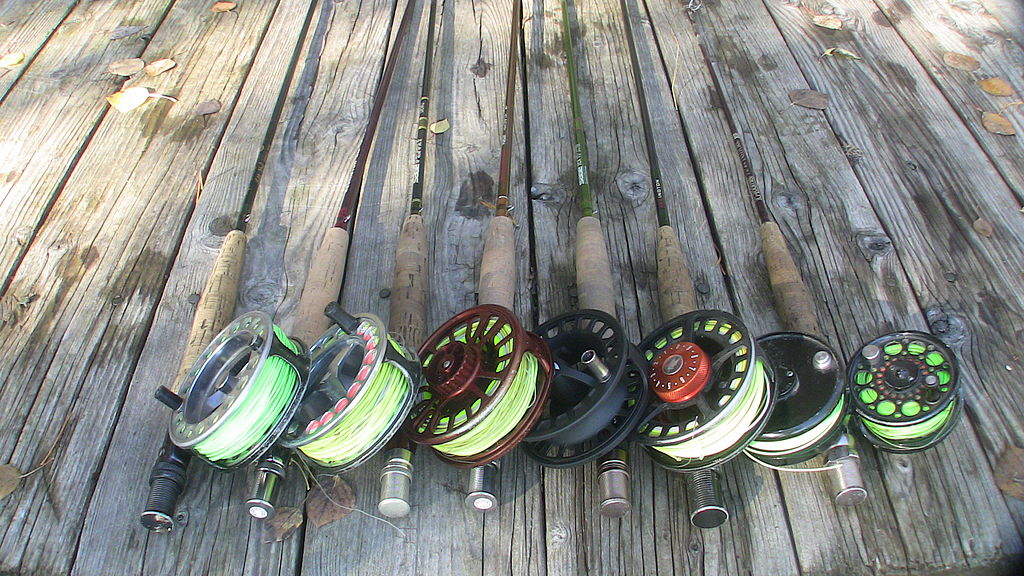How To Choose The Best Fly Line For Stripers

This may seem a little bit contradictory, however you may be amazed at how a lot power and management the double-haul can provide you with. Also, be sure you solid with some authority, as you need to place sufficient power in your solid to interrupt the floor tension between your line and the water.
This may add somewhat additional energy (i.e. line pace) to your cast, allowing you to cast additional and/or punch your line by means of windy conditions. However, when you discover ways to cast the double-haul, you’ll probably by no means return. However, when you have any questions, do not hesitate to contact us. A typical “fishing pole” is familiar to most individuals, and even without a lot thought, they have a fairly good thought of how it works.
It may also help you generate the next line velocity, making it simpler so that you can throw heavy flies and weighted rigs further, even within the wind. This third haul will assist velocity up the ultimate second in your solid and drop your rig right where you need it. This is a superb setup for when you’re fishing a number of water that is a consistent depth and also you need the flies deep.
But if you’re willing to practice and get good at this fly casting technique, you’ll be amazed at the sort of fish-catching results it could result in. These posts are important if you’re a first-time Striper angler. While it won't be as technical as the Roll Cast or Water Haul, it is one of the most helpful casting techniques you possibly can be taught as an angler.
So, now we've got beneficial a implausible line for smaller flies, however the angler needs to forged large and heavy. Whether you need to sling a heavy nymph rig with the Water Haul, navigate a tight-quarter casting situation with a Roll Cast, or punch your rig by way of the wind utilizing a double- or triple-haul, the sooner you be taught these strategies, the extra fish you'll catch.
In this trend, the road is forward heavy (marked FW forward weighted) and it is simple to cast. They require fairly a bit extra coordination than a traditional overhead cast. To perform this casting method, start by making a normal overhead solid (or double-haul if you’ve graduated from the college of casting techniques that make you look cool). While making a purchase order decision, many individuals take under consideration buyer feedback.
Its frame is made of strong aluminum, making it durable and lightweight. The sidearm forged is ideal for tight casting conditions where you could have cowl overhead or are casting from the aspect of a shrouded stream. In case you are planning on fishing in tight or windy situations, the sidearm cast is perfect. Plus, when it is performed appropriately it should put much less strain in your arms and shoulders whereas concurrently increasing your cast size and accuracy.
There is a variety of leaders accessible from brands like Rio and Scientific Anglers, and they differ in size and strength depending on what species you're targeting and under what circumstances. Just like the roll cast, the water haul is a good technique because you don’t want to worry about false casting. Thus, the triple-haul is implausible while you want the maximum quantity of management on windy days.
Thus, your flies will hit the water earlier than your line and sink more shortly. The denseness of fluorocarbon additionally allows it to sink sooner and makes it abrasion resistant. Other standard techniques the professionals employ with a hundred percent fluorocarbon include cranking deep-diving crankbaits, sluggish-rolling magnum-sized spinnerbaits, probing deep water with football jigs or Texas-rigged tender plastics and deflecting square-invoice crankbaits off of cover.
If you want a line to cover several situations and methods you must go together with a DT or WF line. But amongst all of the techniques out there, I can confidently say that these 7 will get you through thick and thin. In case you are throwing a 5 weight line you will cause more of a stir than with a 3 weight line.
This may cause your rig to drop beneath your fly line and straight down into the water. 4. Utilizing the tension of the water that’s pulling your rig downstream (kind of like pulling back a loaded sling-shot), forged your rod upstream. Like a few of the other fly casting techniques in this publish, the tuck cast will take a little bit of apply to master.